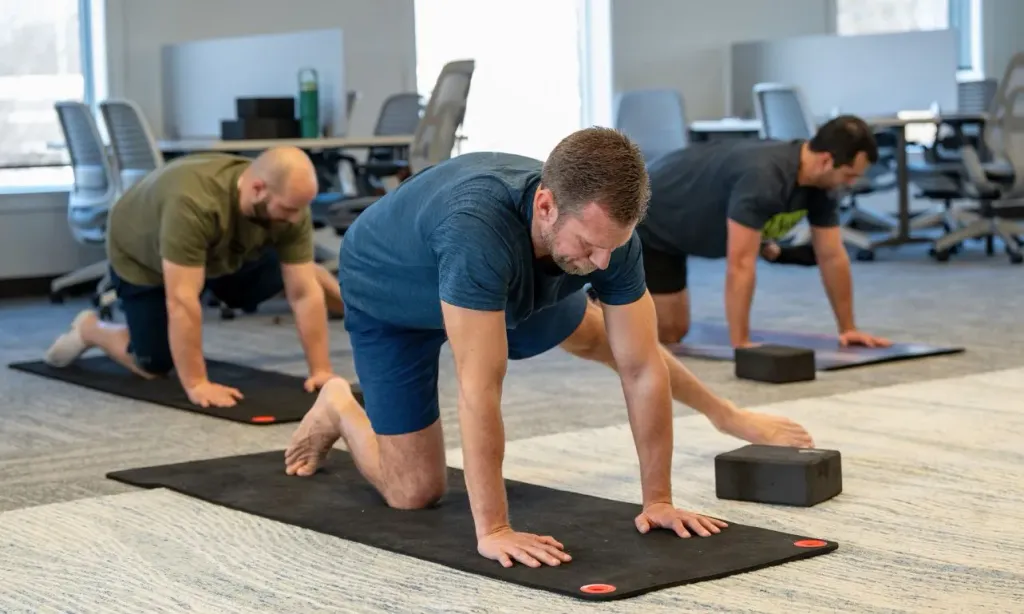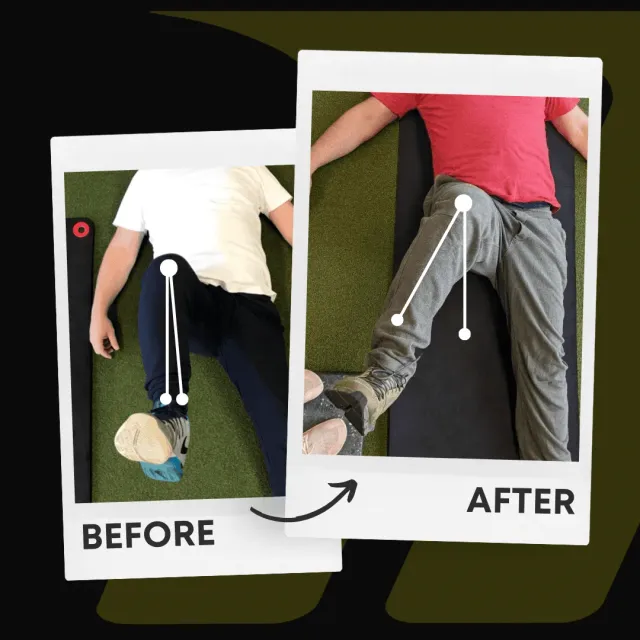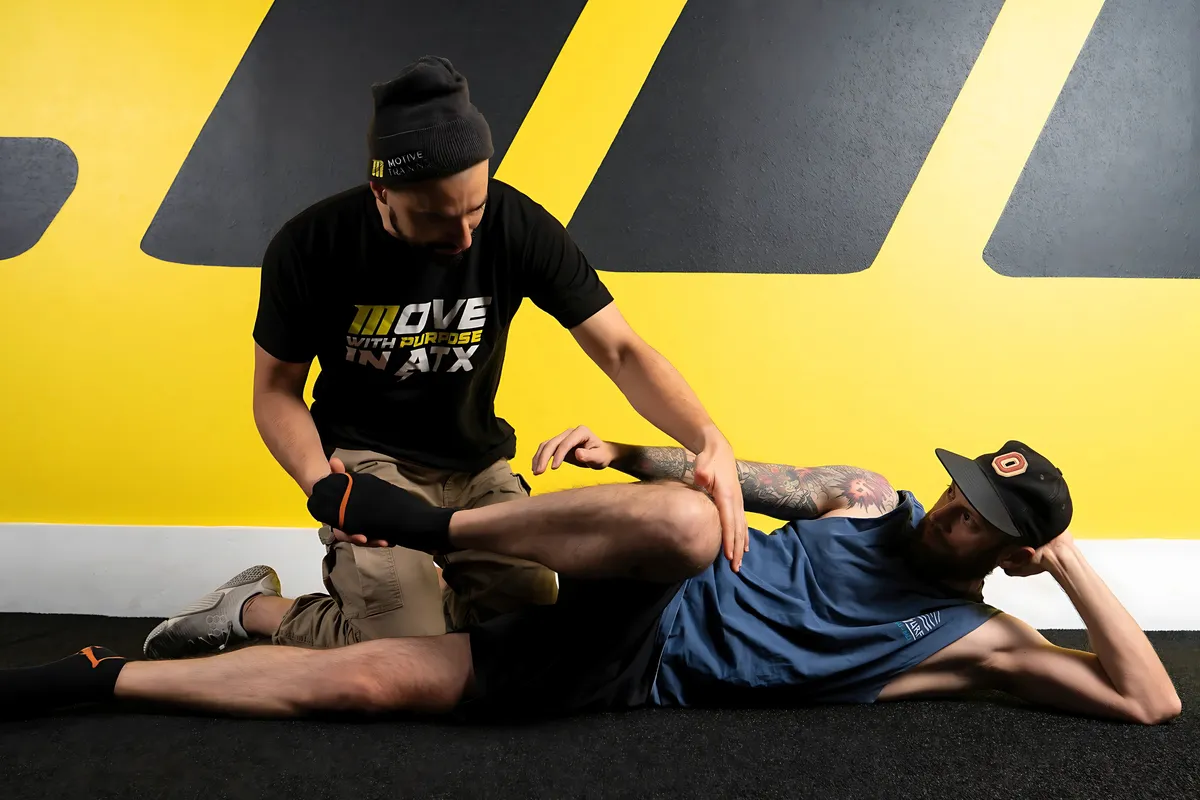Does stretching work?
March 21, 2024 | Stretching

Ever feel like your body’s become a tangled mess of knotted muscles and creaky joints? You’re not alone. As we age, our bodies naturally lose some of their fluidity, leading to stiffness, decreased range of motion, and, let’s be honest, not-so-pleasant aches and pains. But fear not, fellow 30+-year-olds! The answer to unlocking smoother, pain-free movement lies in two key concepts: mobility and flexibility.
Now, “stretch more” is often the first piece of advice thrown our way. But is it really that simple? Does stretching truly hold the magic key to untying all our bodily knots? Let’s delve deeper and discover the truth about stretching mobility, and flexibility–and how they work together to create a symphony of movement in your body.
Mobility vs. Flexibility: Moving with Ease
While often used interchangeably, mobility and flexibility have distinct roles in our body’s movement. Here’s how they differ:
Flexibility refers to a given joint’s passive range of motion. It is the capacity of muscles and connective tissues, such as tendons and ligaments, to lengthen passively. Imagine your muscles as rubber bands; the more flexible they are, the further they can stretch without resistance. Increased flexibility allows for a broader range of motion in specific joints, like bending deeper during a squat.
Mobility, on the other hand, is about active movement. It encompasses the entire joint’s ability to move freely through its full range of motion. In other words, mobility is how you control and move your joints. Think of it as the dynamic interplay between flexible muscles, stable joints, and a coordinated nervous system. Mobility drills often involve active movements throughout a joint’s range of motion, sometimes incorporating external resistance for added challenge.
Here’s the connection: flexibility is a critical component of mobility. Tight muscles restrict joint movement, hindering mobility. Thus, to improve mobility and flexibility in a given joint, we must stretch and mobilize those joints.
How Stretching Works: Unveiling the Science Behind the Stretch
So, how exactly does stretching work? It all boils down to the physiological effects it has on your body. Stretching primarily targets two structures:
- Muscles: When held in a stretched position, muscles undergo a neurological response called the stretch reflex. This reflex initially causes a muscle to contract to resist the stretch, but with sustained stretching, the reflex weakens, allowing the muscle to lengthen and become more flexible.
- Fascia: Fascia is a web-like connective tissue surrounding muscles, organs, and other structures. Tightness in the fascia can restrict joint movement. Stretching helps facilitate better movement by making the connective tissue more viscous (muscle viscosity is a sign of good movement), allowing for smoother joint gliding.
The benefits of stretching extend beyond these direct physiological effects. Studies suggest that stretching can:
- Improve Blood flow: Stretching increases circulation, delivering essential nutrients to your muscles and promoting faster recovery.
- Enhance Proprioception: Proprioception refers to your body’s awareness of its position in space. Stretching can improve your body’s ability to sense joint position, leading to better coordination and balance.
- Reduce Pain And Stiffness: Tight muscles can contribute to aches and pains. Stretching helps alleviate these discomforts by promoting relaxation and reducing muscle tension.
Unlocking Your Potential: Stretching Strategies for Improved Mobility
Now that you understand the science behind stretching, let’s explore how to incorporate it into your routine for maximum mobility gains. Here are some key strategies:
- Types Of Stretches: There are a million interpretations of stretching; many gym goers think touching your toes is “stretching,” And we bet most of you have heard of static and dynamic stretching. However, that doesn’t cover many variations of stretches and mobility drills. At Motive Training, we use a combination of long-term active stretches mixed with end-range training to improve your flexibility.
- Use Targeted Stretches: Identify areas where you feel tightness or lack mobility. Tailor your stretches to address these specific areas for the most significant impact. In our world, we attack weaknesses first, then strengths. If you can’t figure out how to address your weaknesses, reach out, and we’ll help you do so.
- Consistency Is Key: Don’t expect overnight results. Aim for regular stretching sessions, ideally 2-3 times a week, to see and feel a gradual improvement in your mobility.
- Listen To Your Body: Stretching should never cause pain. Ease into each stretch and breathe deeply throughout the hold. Discomfort is a sign to back off slightly.
Beyond Stretching: A Holistic Approach to Mobility
While stretching is a cornerstone for improved mobility, it’s not the only puzzle piece. Here are some additional practices to consider:
- Strength Training: Building strong muscles around your joints provides stability and support, allowing for better control throughout your range of motion.
- Foam Rolling: Self-myofascial release techniques like foam rolling can help target tight spots and improve fascial mobility.
- Movement Variety: Engage in activities that promote movement diversity, such as yoga or Pilates, to challenge your body and improve your overall movement patterns.
So, Does Stretching Work?
The answer is unequivocally yes. Stretching works wonders.
Stretching is an investment in your health and well-being. By incorporating it into your routine, you’ll unlock a world of benefits, from improved mobility and injury prevention to better posture and overall performance. Remember, consistency is key. Start small, stretch regularly, and unlock your full potential for a life filled with free and easy movement.
Written by

Motive Training Staff
We’ll teach you how to move with purpose so you can lead a healthy, strong, and pain-free life. Our headquarters are in Austin, TX, but you can work with us online by signing up for KINSTRETCH Online or digging deep into one of our Motive Mobility Blueprints.

